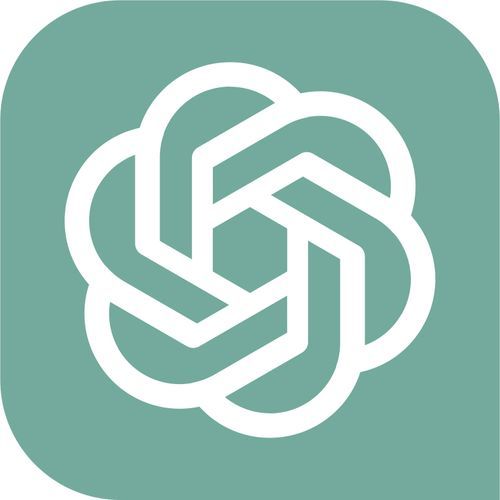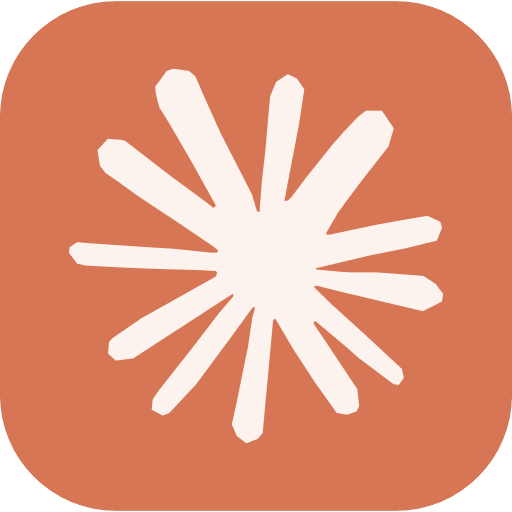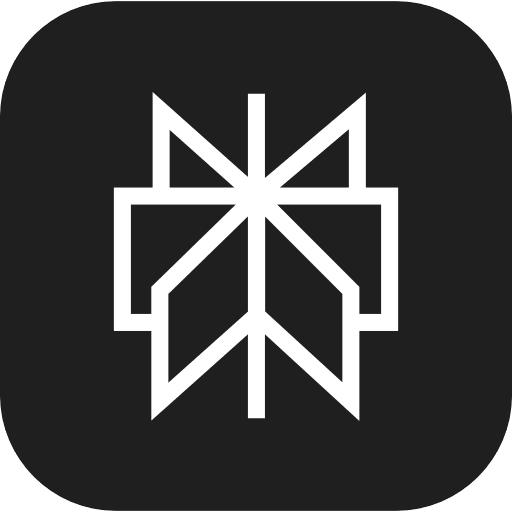Library of teambuilding games & icebreakers


Water gun fight
A water gun fight is an opportunity for your employees to leave the stresses of the office behind them and enjoy some harmless fun.
Water gun fight
A water gun fight is an opportunity for your employees to leave the stresses of the office behind them and enjoy some harmless fun.
Great for: Interpersonal bonding, relieving stress
Duration: 30 minutes
You’ll need: An open space, various water guns (at least one per person)
How to organise:
- Mark approximate boundaries for your water gun fight. If you’re in a park, this might simply be the approximate confines of the park itself.
- Scatter various water guns through the space for your employees to discover once the fighting begins.
- When you say “Go!” players will scatter to find a water gun and start firing at other players.
- There are no fixed rules here—the idea is simply to have fun!
- Blow a whistle to signify the end of the game.
Gallery



Video


Blind drawing game
Similar to a live-action game of Pictionary! In pairs, one person describes an object, and the other person must draw it without seeing it.
Blind drawing game
How to play Blind drawing game
Similar to a live-action game of Pictionary! In pairs, one person describes an object, and the other person must draw it without seeing it.
Gallery



Video


Giant Connect Four
Giant Connect Four is a strategic and engaging game that promotes critical thinking, decision-making, and friendly competition. It encourages problem-solving skills and provides an opportunity for participants to interact and strategize with each other in a relaxed setting.
Giant Connect Four
How to play Giant Connect Four
Instructions: Set up a giant Connect Four board on a stand. Participants take turns dropping their colored discs into the slots, aiming to get four in a row horizontally, vertically, or diagonally. The player who achieves four in a row first wins.
Materials needed: Giant Connect Four board.
Giant Connect Four is a strategic and engaging game that promotes critical thinking, decision-making, and friendly competition. It encourages problem-solving skills and provides an opportunity for participants to interact and strategize with each other in a relaxed setting.
Gallery



Video


Spray balloons
This is a really fun game for beating the heat. If you will be doing any outdoor activities, this is a good one to add. All participants will need a balloon, a spray bottle filled with water, and some form of receptacle like a trash can or box.
Spray balloons
How to play Spray balloons
This is a really fun game for beating the heat. If you will be doing any outdoor activities, this is a good one to add. All participants will need a balloon, a spray bottle filled with water, and some form of receptacle like a trash can or box.
The goal is for players to guide the balloon into the container using only the spray bottle to propel it. Contestants can spray the balloon with the water to guide it off the ground and where they want it to go. Challenge everyone to complete the challenge in one minute!
Gallery



Video


Under 18 Achievements
It can be really interesting to learn more about people’s backgrounds, particularly if they aren’t from your area. You never know who was their high school lacrosse champion, or moved here from Japan. Kick off your icebreaker exercise by having everyone share the biggest accomplishment they achieved before turning 18.
Under 18 Achievements
How to play Under 18 Achievements
It can be really interesting to learn more about people’s backgrounds, particularly if they aren’t from your area. You never know who was their high school lacrosse champion, or moved here from Japan. Kick off your icebreaker exercise by having everyone share the biggest accomplishment they achieved before turning 18.
Gallery



Video


Adaptability
Imagine a team that rolls with the punches. That's adaptability—being cool with change and helping colleagues navigate the twists and turns of work life. Adaptability activity - "Change challenge" brainstorm: Present a hypothetical or real work-related change that the team might face in the future. Divide participants into groups and provide them with markers, flip charts, or whiteboards. Instruct each group to brainstorm creative ways to embrace and adapt to the change, focusing on positive outcomes. Encourage groups to discuss their ideas and strategies for effectively navigating the proposed change. This brainstorming activity enhances adaptability skills, encourages innovative thinking and promotes a proactive approach to change management.
Adaptability
Imagine a team that rolls with the punches. That's adaptability—being cool with change and helping colleagues navigate the twists and turns of work life.
Adaptability activity - "Change challenge" brainstorm:
- Present a hypothetical or real work-related change that the team might face in the future.
- Divide participants into groups and provide them with markers, flip charts, or whiteboards.
- Instruct each group to brainstorm creative ways to embrace and adapt to the change, focusing on positive outcomes.
- Encourage groups to discuss their ideas and strategies for effectively navigating the proposed change.
This brainstorming activity enhances adaptability skills, encourages innovative thinking and promotes a proactive approach to change management.
Gallery



Video


Confess then guess
This is a simple “getting to know you” game for groups of all sizes, especially people who are just getting to know each other. In every round, participants write down the answer to a prompt (that was previously created) and then put the answer into a bowl. A host will read out each reply and players have to guess which person wrote the answer. Some prompts to try are: Your greatest fear Your favorite animal story Who you were in a past life Your favorite activity for relaxing What you were voted in high school What you wanted to be when you grew up The first item on your bucket list Your personal hero Something you’re allergic to
Confess then guess
How to play Confess then guess
This is a simple “getting to know you” game for groups of all sizes, especially people who are just getting to know each other. In every round, participants write down the answer to a prompt (that was previously created) and then put the answer into a bowl. A host will read out each reply and players have to guess which person wrote the answer. Some prompts to try are:
- Your greatest fear
- Your favorite animal story
- Who you were in a past life
- Your favorite activity for relaxing
- What you were voted in high school
- What you wanted to be when you grew up
- The first item on your bucket list
- Your personal hero
- Something you’re allergic to
Gallery



Video


Relay Sack Race
Relay Sack Race encourages teamwork, coordination, and builds camaraderie among team members. It adds an element of fun and nostalgia to the picnic while providing an opportunity for participants to cheer on their teammates.
Relay Sack Race
How to play Relay Sack Race
Instructions: Divide participants into teams. Each team stands in a line, and the first player in each team gets inside a sack. On "go," they hop to a designated point and back, then pass the sack to the next teammate. The team that finishes first wins.
Materials needed: Sacks or large bags.
Relay Sack Race encourages teamwork, coordination, and builds camaraderie among team members. It adds an element of fun and nostalgia to the picnic while providing an opportunity for participants to cheer on their teammates.
Gallery



Video


Online chess club
You might be surprised how many workforces enjoy a game of chess!Creating an online chess club is easy and free. Schedule regular games throughout the year and reward the winner with a small prize like a voucher or cash bonus - monetary rewards are a great incentive for driving online social interaction.
Online chess club
You might be surprised how many workforces enjoy a game of chess!
How to play online chess club
Creating an online chess club is easy and free. Schedule regular games throughout the year and reward the winner with a small prize like a voucher or cash bonus - monetary rewards are a great incentive for driving online social interaction.
Gallery



Video


Photo caption contest
Pick out a funny meme or cool photo and ask everyone to come up with a clever caption. You can either have one person pick a winner, do so by committee, or share with the company and let audience applause dictate the most popular caption. This is a quick team-building activity and easy to put together, and a good option for when you have a short window of time to bring everyone together. This activity is an ideal choice if your current bandwidth only allows gathering everyone in the breakroom for an hour or so. Simply share the image the night before and let everyone bring their A-game in the morning.
Photo caption contest
How to host a Photo caption contest
Pick out a funny meme or cool photo and ask everyone to come up with a clever caption. You can either have one person pick a winner, do so by committee, or share with the company and let audience applause dictate the most popular caption. This is a quick team-building activity and easy to put together, and a good option for when you have a short window of time to bring everyone together. This activity is an ideal choice if your current bandwidth only allows gathering everyone in the breakroom for an hour or so. Simply share the image the night before and let everyone bring their A-game in the morning.
Gallery



Video


Bucket list sharing
Don’t let daily drudgery drain your big dreams. As a leader, you can help encourage your entire team to keep sight of those bigger life goals. Start your next event or meeting by asking everyone to share one of the items from their bucket list, with a brief explanation of why. You can encourage dialogue by asking if they think they’ll ever accomplish that goal, or how they might go about it. This is a great way to learn about what the people you work with really value and what matters to them outside of work.
Bucket list sharing
How to play Bucket list sharing
Don’t let daily drudgery drain your big dreams. As a leader, you can help encourage your entire team to keep sight of those bigger life goals. Start your next event or meeting by asking everyone to share one of the items from their bucket list, with a brief explanation of why. You can encourage dialogue by asking if they think they’ll ever accomplish that goal, or how they might go about it. This is a great way to learn about what the people you work with really value and what matters to them outside of work.
Gallery



Video


Blindfold trust game
This trust-building game is simple and requires only a blindfold and players willing to work together. While you don’t necessarily need a big field to play this in, it would be better to have an open area to avoid too many hazards getting in the way.
Blindfold trust game
This trust-building game is simple and requires only a blindfold and players willing to work together. While you don’t necessarily need a big field to play this in, it would be better to have an open area to avoid too many hazards getting in the way.
How to play:
Break groups into small teams of two. One player is the leader, and the other wears the blindfold. The leader has to guide the blindfolded player to the endpoint while making sure they avoid bumping into objects.
For example, pick a start and end location; players start in the office and end at an outdoor seating area.
Materials you’ll need: Blindfold(s)
How many people: Small to mid-sized teams (8-16 people)
Gallery



Video


Office apples to apples
Office Apples to Apples is a hilarious twist on the classic word game, perfect for bringing some shenanigans to a corporate event.
Office apples to apples
Office Apples to Apples is a hilarious twist on the classic word game, perfect for bringing some shenanigans to a corporate event. Here's how to get the party started.
Set up:
- Get your cards ready. A spin on the traditional Apples to Apples card game, you need to create cards with office-themed words or phrases, like “coffee break” or “Monday meeting madness”.
- Lay Down the Law: Explain that one lucky soul plays judge in each round while the others throw down their wackiest associations to the green apple card played.
- The judge picks their favorite, and that team scores a point. Set a point limit for winners.
- Keep the laughs rolling by rotating judges each round.
Gallery



Video


Silent signals
Silent signals is a fun, in-office game where players pass a series of mime gestures down a line, trying to keep the message intact. Think of it like a game of telephone but without speaking—just silent, exaggerated gestures that often get hilariously misunderstood along the way.It’s a great way to get everyone laughing and focusing on non-verbal communication. Plus, the confusion at the end is always worth the effort!
Silent signals
Silent signals is a fun, in-office game where players pass a series of mime gestures down a line, trying to keep the message intact. Think of it like a game of telephone but without speaking—just silent, exaggerated gestures that often get hilariously misunderstood along the way.
It’s a great way to get everyone laughing and focusing on non-verbal communication. Plus, the confusion at the end is always worth the effort!
How to play:
- The first person mimes a gesture to the next person.
- The mime gets passed down the line.
- The last person tries to guess what the original gesture was!
Gallery



Video


Time-Traveling Tech Expedition
Buckle up for a tech-infused journey through time in the Time-Traveling Tech Expedition. From ancient civilizations to futuristic landscapes, your team will delve into history's greatest technological milestones. But here's the twist: you'll also tackle hands-on tech challenges inspired by each era. As you leap through time and grapple with inventions past and future, your team's adaptability and innovative spirit will shine. It's a quest that transforms history into a playground for the tech-savvy.
Time-Traveling Tech Expedition
Buckle up for a tech-infused journey through time in the Time-Traveling Tech Expedition. From ancient civilizations to futuristic landscapes, your team will delve into history's greatest technological milestones. But here's the twist: you'll also tackle hands-on tech challenges inspired by each era. As you leap through time and grapple with inventions past and future, your team's adaptability and innovative spirit will shine. It's a quest that transforms history into a playground for the tech-savvy.
Instructions
- Divide participants into tech-savvy teams.
- Assign different historical eras, each with corresponding tech challenges.
- Research and create puzzles inspired by technology of the past and future.
- Solve tech-related tasks and move on to the next era.
- Celebrate accomplishments and discuss how technology has evolved.
Gallery



Video


Communication Web
This activity is perfect for the office and smaller teams! It can be great at showing your team everyone’s role in the workplace and how everyone is connected in some way or another.
Communication Web
This activity is perfect for the office and smaller teams! It can be great at showing your team everyone’s role in the workplace and how everyone is connected in some way or another.
Materials needed:
- Get some yarn in different colors.
- List down tasks or roles that are team tag-teams.
Instructions on how to play:
- Match tasks with yarn colors.
- Pass the yarn around to show how tasks connect.
- Talk about how communication is key.
Why it's a great team building game:
- See the ties: Makes teamwork visible with a colorful yarn masterpiece.
- Team-up time: Gets everyone working together and feeling like a united force.
- Spot the stars: Shows who the key players are in your team's success.
Top tip to help the game run smoothly: Before diving in, explain why you're doing it. Let everyone know this web thing is about teamwork and strong connections.
Gallery



Video


“Spring cleaning” scavenger hunt
Messy office spaces are no fun. In fact, according to Harvard Business Review, a disorganized work space can have real impacts on productivity and morale. Naturally, you want everyone to clean up - but you don’t want to nag. Turn things into a game instead by creating a tidy up treasure hunt around the office. This game works best when announced in advance, and will require some prep work. Here is how it works: Hide clues in various messy spots around the office, and the team who recovers the most clues wins a prize. For example, you might want to put a clue on an unstocked paper towel machine, an overflowing trash can, or a buried-in-paperwork desk. Make sure to hide the clues in such a way that people will need to organize or tidy up a bit to obtain the paper. To further incentivize people, you could also offer small prizes for every clue collected, like movie theater candy, dollar bills, or tickets for food in the cafeteria.
“Spring cleaning” scavenger hunt
Messy office spaces are no fun. In fact, according to Harvard Business Review, a disorganized work space can have real impacts on productivity and morale. Naturally, you want everyone to clean up - but you don’t want to nag.
How to host “Spring cleaning” scavenger hunt
Turn things into a game instead by creating a tidy up treasure hunt around the office. This game works best when announced in advance, and will require some prep work. Here is how it works: Hide clues in various messy spots around the office, and the team who recovers the most clues wins a prize. For example, you might want to put a clue on an unstocked paper towel machine, an overflowing trash can, or a buried-in-paperwork desk. Make sure to hide the clues in such a way that people will need to organize or tidy up a bit to obtain the paper. To further incentivize people, you could also offer small prizes for every clue collected, like movie theater candy, dollar bills, or tickets for food in the cafeteria.
Gallery



Video


Flight seat partner
A really simple activity, this game teaches people how to proactively engage new people. Everyone will need a pen and paper.
Flight seat partner
A really simple activity, this game teaches people how to proactively engage new people. Everyone will need a pen and paper.
Start with these instructions:
- Have everyone imagine a scenario where they are traveling for a work trip.
- Have people in pairs and have one person pretend that they have reading materials or other items to prepare for a big meeting.
- At that point, the other person should find a way to ask “what do you do?” or “where do you work?”
- The other player should find a way to lead to a successful sales pitch.
The basic idea is to get people more comfortable starting conversations with strangers and incorporating work information.
Gallery



Video


Flip it over!
Here we can bring a little bit of strategic thinking into our corporate teambuilding activities. Flip It Over! It's a hoot of a game where teams stand on a blanket and aim to flip it over without anyone touching the ground.
Flip it over!
Here we can bring a little bit of strategic thinking into our corporate teambuilding activities. Flip It Over! It's a hoot of a game where teams stand on a blanket and aim to flip it over without anyone touching the ground.
Set up:
- Grab a sturdy blanket or tarp big enough for your teams. Think big, up to 10 people.
- Team everyone up, making groups from 5 to 10 work best.
- Lay the groundwork, spreading the blanket flat on the ground. Each team hops on, making sure no one’s cheating by sneaking a foot off!
- Explain the game. Flip the blanket without a single soul touching the ground. Teamwork is the name of the game.
- Let the flipping begin. Teams will be rapid-fire brainstorming moves to turn the blanket. Flip, flip, hooray!
Gallery



Video


Call a number
This circle game is ideal for warming up and gaining energy. Follow these steps: First, give all of the players ordered numbers (so if there are 15 players there would be numbers 1-15). Players should gather in a circle and then choose someone to go first. The player will mention a random number within the range of numbers you are playing with. The player with the number mentioned must respond by mentioning the number of another player. The game continues with players responding when another player calls their number. If a player doesn’t respond right away when their number is called, they are out.
Call a number
How to play Call a number
This circle game is ideal for warming up and gaining energy. Follow these steps: First, give all of the players ordered numbers (so if there are 15 players there would be numbers 1-15). Players should gather in a circle and then choose someone to go first. The player will mention a random number within the range of numbers you are playing with. The player with the number mentioned must respond by mentioning the number of another player. The game continues with players responding when another player calls their number. If a player doesn’t respond right away when their number is called, they are out.
Gallery



Video


Estimation game
Similarly to Kanban practices, an Estimation Game helps your employees manage their tasks and workflow. The premise of the game is to estimate the time or effort needed for project tasks. This can be especially helpful for newer team members and those working across departments.
Estimation game
Similarly to Kanban practices, an Estimation Game helps your employees manage their tasks and workflow. The premise of the game is to estimate the time or effort needed for project tasks. This can be especially helpful for newer team members and those working across departments. Here’s the setup.
Set up:
Have team members write down some of the important tasks they carry out at work on sticky notes. Get them displayed across your groups. These could be tasks like “creating a project timeline” or “preparing a corporate presentation.” The guesses need to be from people who don’t perform those tasks, estimating how long each one takes. The task owner reveals to the group the actual time needed, with the closest guess gaining a point.
Gallery



Video


Show and tell
Show and Tell is a fun way to start the team building session. Before the meeting starts, ask each person to bring a mascot with them. At the beginning of the meeting, each team member will have a turn at introducing their mascot and explaining why they brought that item with them.
Show and tell
This one probably doesn’t need too much introduction, you’ll probably remember it from school.
How to play show and tell
Show and Tell is a fun way to start the team building session. Before the meeting starts, ask each person to bring a mascot with them. At the beginning of the meeting, each team member will have a turn at introducing their mascot and explaining why they brought that item with them.
Gallery



Video


Panty Hose Game
Have you ever heard of “Minute to Win It” games? They’re exactly what they sound like! 60-second games that are over before you know it. You can play for longer if you wish, but the idea is to keep things fast-paced and free-flowing. They’re ideal games for warming up, setting the tone for the day, or for whenever you want a quick-fire activity to fill a gap (or be part of another one – such as in a relay race or obstacle course). Anyway, this Panty Hose Game is one example of a minute-to-win-it game that always goes down well. Here’s how to play: Lay rows of 5+ water bottles on the ground, with one row for each person/team Give everyone playing a small ball (e.g., a baseball) and some pantyhose Tell them to shove the ball into the foot of one pantyhose leg Tell them to pull the top of the pantyhose over their head, so the ball dangles at the other end like a strange antenna Their task is to move up the line of bottles, swinging the ball (no hands allowed!) to knocking each one over as quickly as possible The first person/team to knock their bottles over wins
Panty Hose Game
How to play Panty Hose Game
Have you ever heard of “Minute to Win It” games? They’re exactly what they sound like! 60-second games that are over before you know it.
You can play for longer if you wish, but the idea is to keep things fast-paced and free-flowing. They’re ideal games for warming up, setting the tone for the day, or for whenever you want a quick-fire activity to fill a gap (or be part of another one – such as in a relay race or obstacle course).
Anyway, this Panty Hose Game is one example of a minute-to-win-it game that always goes down well. Here’s how to play:
- Lay rows of 5+ water bottles on the ground, with one row for each person/team
- Give everyone playing a small ball (e.g., a baseball) and some pantyhose
- Tell them to shove the ball into the foot of one pantyhose leg
- Tell them to pull the top of the pantyhose over their head, so the ball dangles at the other end like a strange antenna
- Their task is to move up the line of bottles, swinging the ball (no hands allowed!) to knocking each one over as quickly as possible
- The first person/team to knock their bottles over wins
Gallery



Video


Creative Mime
Divide the team into pairs. One person in each pair chooses an object or concept and mimes it without using any words or sound. The other person tries to guess what the mime represents.
Creative Mime
How to play:
Divide the team into pairs. One person in each pair chooses an object or concept and mimes it without using any words or sound. The other person tries to guess what the mime represents.
Materials needed: None
Benefits:
- Enhanced nonverbal communication: Encourage your team to sharpen their ability to communicate effectively without relying on words. This activity fosters creativity in finding innovative ways to convey messages through facial expressions and body language.
- Boosted team spirit: Experience moments of laughter and joy as you witness your team members' hilarious and creative interpretations of various mimes. It's like a comedy show where your employees become silent performers, fostering camaraderie and a positive team atmosphere.
Gallery



Video

















